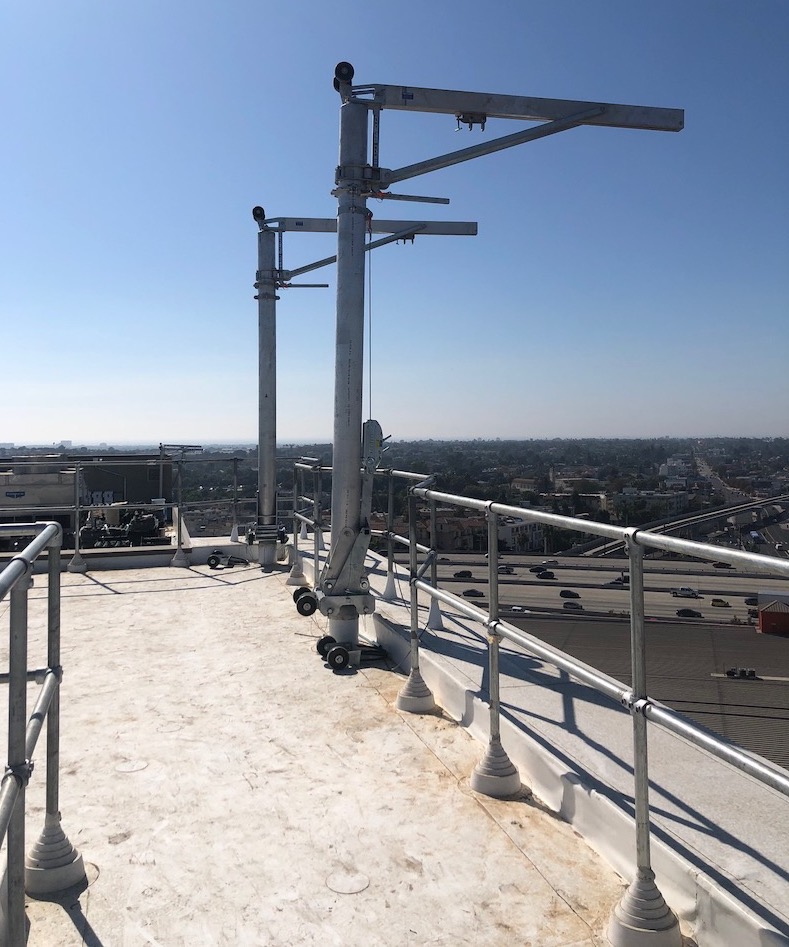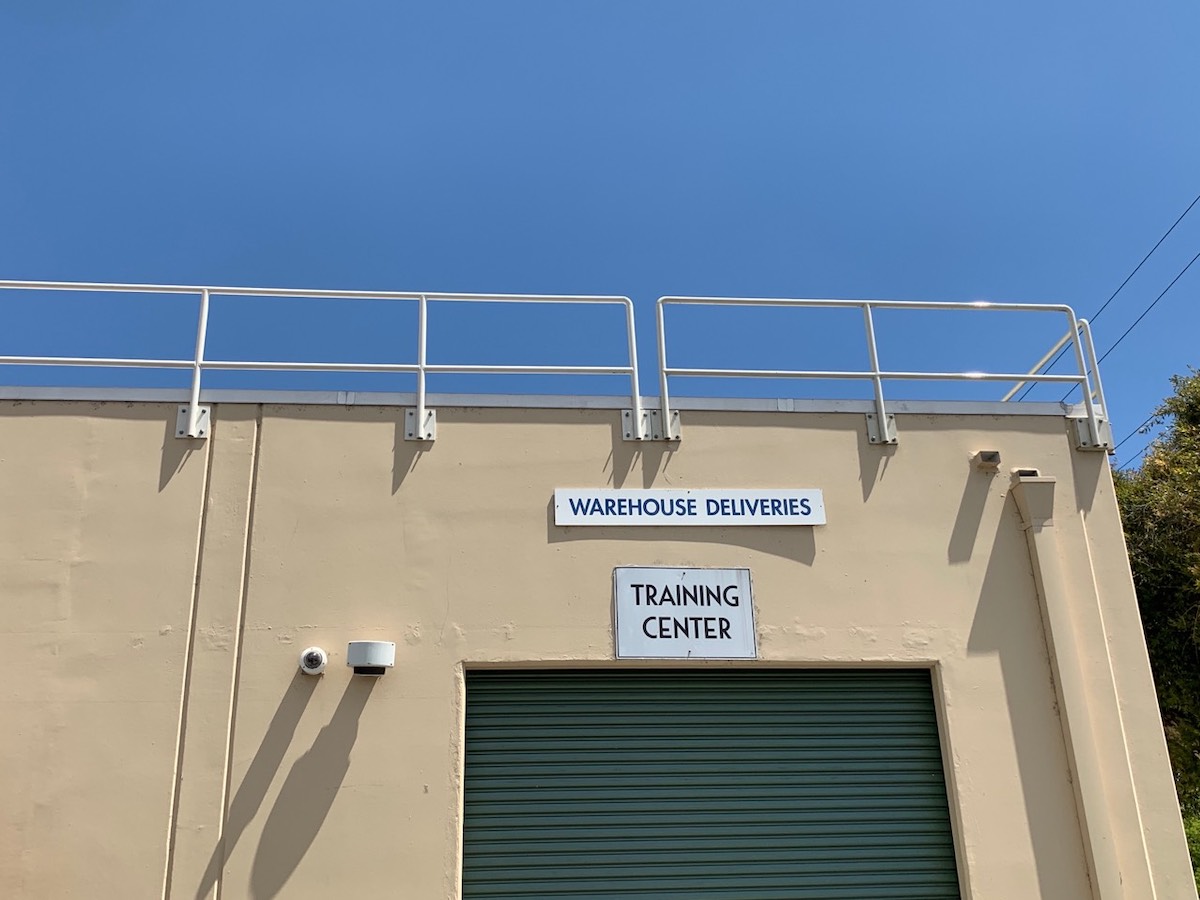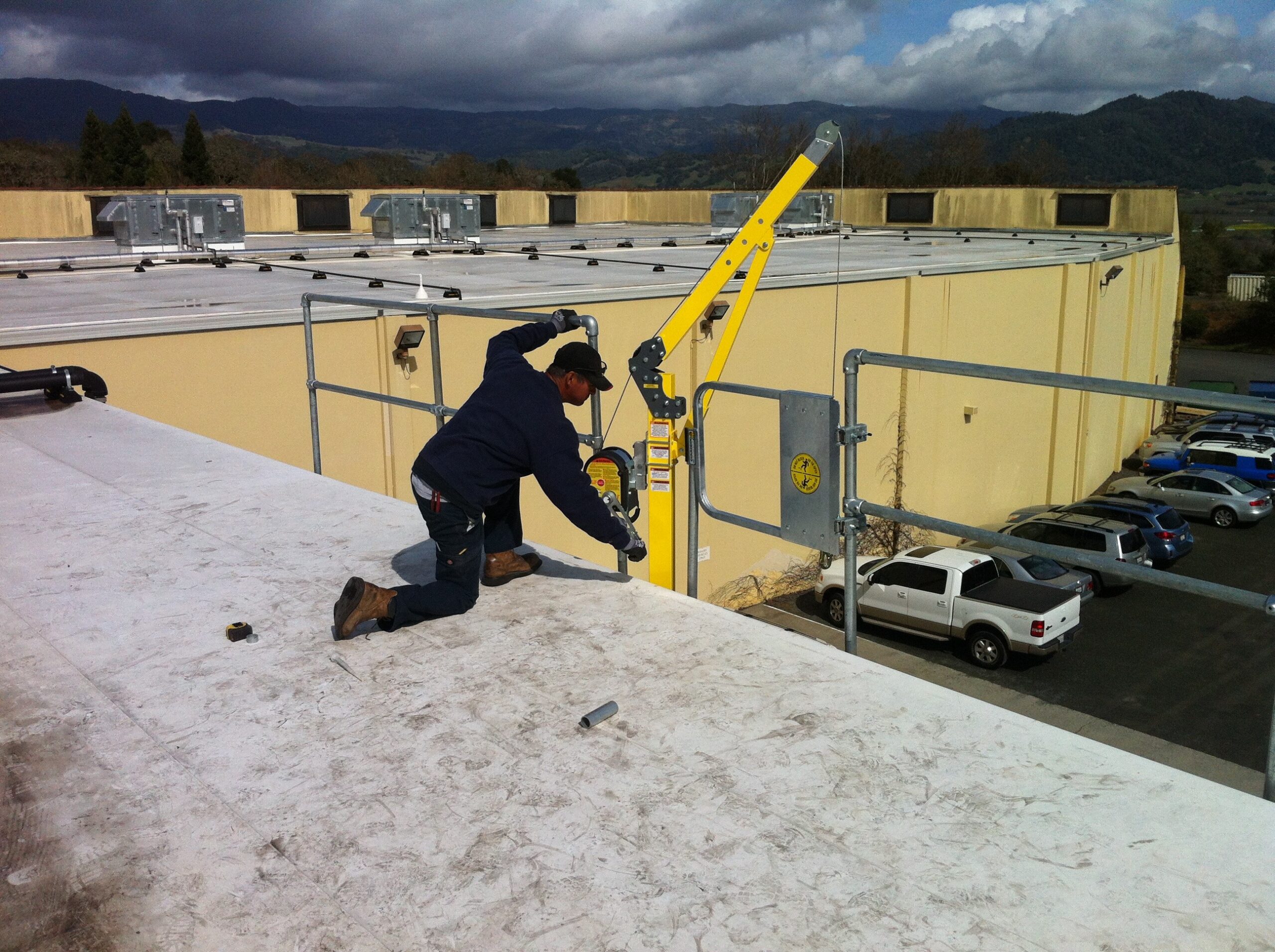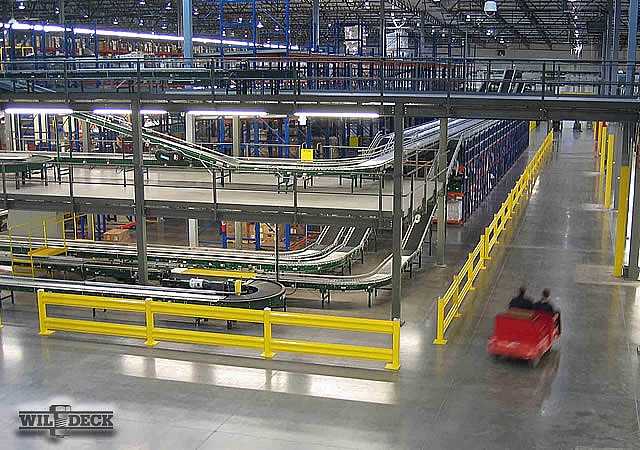Versatile provides rigid rail overhead fall protection systems, and overhead rail systems to keep your workers safe. No matter if you’re looking for a comprehensive fall protection rail system or general overhead protection, we’re the team for you.
Our overhead rail systems are trusted by building owners throughout California. We guide you through every step of the process from initial consultation to engineering and installation, all while ensuring you have the proper test documentation per Cal/OSHA Title 8 requirements.
Request A Quote
What are the benefits of rigid rail fall protection systems?
A rigid rail fall protection system consists of an overhead anchor point, which is then attached to a full-body harness and a connector. At the point of connection between the harness and the anchor link, the use of a shock-absorbing lanyard will ensure that users are completely safe, even if they slip.
This style of rope anchor system will act as a permanent fall arrest system. Often mounted on existing structures or suspended from the wall or floor, these rigid lifelines will offer fall protection with a significantly reduced amount of sag, which decreases the chance of secondary injuries in a fall.
An additional benefit of rigid rail fall systems is that their cables do not deflect downwards when a person is falling. Due to this, the fall distance is always reduced, helping to keep members of staff that use them safely.
With Versatile, you can expect:
Safety
With a fall protection railing system in place, your team will always be protected when at work. No matter what solution you’re looking for, we have something that will keep your team completely safe while at work.
Productivity
With increased mobility, your workers will be able to move around your warehouse with much more ease, helping to boost overall productivity while still completing all of OSHA requirements.
Flexibility
With a range of possible fall protection rail system solutions and countless years of experience, we’re able to deliver a comprehensive solution to your company that will fit into your warehouse space and adapts to what your company needs.
Durability
Our products are built to last, with high-quality materials and continual quality checks ensuring that our products are the very best in the industry.
Compliance
Maximize productivity and mobility with while staying in compliance with Cal/Osha standards. Our team will ensure your fall protection safety.
Versatility
At Versatile Fall Protection, safety is number one priority. We have many different fall protection products and solutions to ensure that your employees are completely protected from fall hazards on the job.
What are the different types of overhead fall protection systems?
Fall protection rail systems come in a range of shapes and sizes. While each is useful in its own way, the safest of all of these are overhead fall protection systems. Typically, these are split into three categories:
- Fall Arrest – These will protect workers at heights, stopping them in mid-air if a fall event were to occur.
- Fall Restraint – If workers are actively moving on a hazard, these short rigid lifelines would clamp to them and stop them from falling in one direction or another.
- Fall Prevention – These are overhead fall protection systems that completely eliminate the risk of falling.
While different formats of protection rails and overhead rail systems will work differently, almost all of them are made up of three components: a rope anchor system, a harness for the worker, and a beam or railing to support the weight of someone in the event of a fall.
Who typically uses overhead rail systems and overhead lifelines?
According to OSHA, any surface that is 48 inches or over off the ground must also have a fall protection rail system aligned with it. Typically, due to these requirements, many workers within manufacturing plants, factories, or any industry that requires active movement over surfaces above this height will require a rigid lifeline system.
Alongside increasing the security of these workers, equipping your buildings with safety rail systems also helps to ensure that users can work more efficiently. Without worrying about falling, many users can work at once, all attached to the overhead rails that you’ve selected.
With boosted safety and increased productivity, overhead fall protection systems are a vital addition to any business that works in line with these conditions.
What are the differences between rigid lifelines and rigid rail protection systems?
While often mixed up, these are actually two distinct methods of creating an environment with total fall protection. Let’s break these down:
- Rigid Rail – A rigid rail is an enclosed track made up of either several (often four or more) parallel bars, a folding rail, or a bridge of rails. These are positioned above where a worker will have to maneuver, with positions into which a person can link themselves into the system. These are permanent and often come with a retractable lifeline which will reduce the fall distance if a fall event were to occur.
- Rigid Lifeline – Although they have a similar structure, the core difference between these two is that in a rigid lifeline, the track is directly attached to the anchorage structure, which means that the force of the fall will be vertical against the structure. Due to this system, the majority of portable fall protection systems will use this technology.
While both rigid rails and rigid lifelines have benefits, rigid rails are typically a more comprehensive solution and one that Versatile actively uses.
Versatile Overhead Fall Protection
Over years of experience, our team of engineers has designed comprehensive rigid rail and fall protection cable systems to ensure the complete safety of your workers when at height.
What’s more, we offer comprehensive solutions for a range of fall hazards, including:






